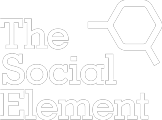Our Chief People Officer Wendy and I recently had a really interesting chat with Experian’s Julie Doleman for our Genuine Humans podcast. I always love talking to Julie, and our conversation made me think about how important customer-first thinking is to all types of businesses, and how listening to what customers want can throw up business opportunities that you may not have thought of before.
Customer-first thinking requires brands to understand what their customers want and how they can provide it.
If you’re really close to your customers, you can innovate and design products or services that help them achieve their goals. For some organisations, this can mean a complete redesign of their culture.
Experian is a great example of this. Julie told us how consumers used to see Experian as quite an intimidating force in their lives – credit checks could be seen as a barrier to getting what they wanted (like a mortgage or a car loan). But by working with people to access, understand and improve their credit scores, Experian started to become something that people could see as helpful, empathetic and that would actively help them reach their goals if they engaged with their own data.
I love the idea that you can really change how a business is viewed, by connecting people to your brand, and listening to what people really want (and how you can help them get it).
That’s the heart of what we’re all about at The Social Element – creating genuine human connections between brands and the people who buy from them – and so it really struck a chord.
There are a few things that really help brands take this approach, and it all starts with listening.
- Campaigns succeed when they start by listening
Before social media, brands relied on focus groups and market research to understand what consumers wanted and how much demand there would be for a product. Today, you can do that at scale. Social media gives brands a direct connection with huge numbers of people, and a much more accurate picture of what they really want. It’s a great tool to listen to what people are saying – what they really care about, their pain points and aspirations. That’s gold for brands who want to create real connections, and ultimately products and services that people need and want.
- Data is only as good as the people who interpret it
To listen properly, you need amazing people who can help you make sense of the listening data, and really get to the heart of what people are saying, reading between the lines and giving you insight that you can act on. You may be dealing with data on one level, but on another you’re listening to human experiences, and you need people with empathy, emotional intelligence and a genuine interest in people. That combination of science and humanity will help you discover what makes your customers tick and how your products and services can support their goals and dreams.
- It takes brave thinking to shift to a customer-first strategy
It’s easy, as a brand, to fall into the trap of pushing content, to focus on the big creative campaigns, and ignore the smaller conversations that might fall under the radar but can be hugely insightful. How are people responding on an emotional level to your brand, and do you really want to know?
Julie’s experience at Experian is so interesting because it took a shift in thinking, to bring consumers close to their data and see it as a tool that they could use to help them achieve their goals. That’s brave thinking.






Leave a Reply